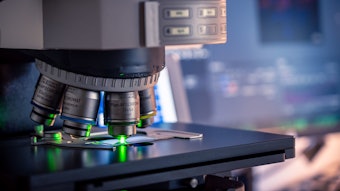
Amorepacific has developed a 'porous, micro-inorganic material platform technology' that according to its researchers, effectively reflects UV rays.
The company's research was published in the April issue of Particle & Particle Systems Characterization. As the company reported, skin aging is known to be induced largely by light. In response, development activities in the industry aim to create sunscreen cosmetics that protect the skin by either reflecting or absorbing light that falls within the UV spectrum. Zinc oxide (ZnO) and titanium dioxide (TiO2) are widely used as inorganic materials to reflect UV rays but these substances cause whitening on the skin due to their high refractive index. They also can agglomerate in formulas.
In response, Li Yan, Ph.D., from Amorepacific R&D Center Material Lab, partnered with Prof. Lee Gi-ra and his lab in Sungkyunkwan University Chemical Engineering, and together, they were able to synthesize and assemble micro-sized spherical silica particles. These are hollow in the center and the film produced from them can reportedly be adjusted to contain even-sized air bubble and gaps in between; this material also is able to reflect visible light and UV rays.
The team also discovered that by matching the refractive index, they could more effectively reflect UV rays while still appearing transparent in the visible spectrum. The company describes this effect as being similar to the natural mechanism of chameleons or green algae that quickly change their color by scattering light.
More specifically, the article abstract explains, "For an optically transparent, UV‐reflective film, hollow silica nanospheres smaller than the visible wavelength (< λvis) are prepared and assembled into colloidal glasses, of which interstices are then backfilled with a polymer." The polymer refractive index is then reportedly matched with the silica shell to minimize backscattering in the visible range. The average distance between the hollow silica particles is further adjusted by tuning the shell thickness to satisfy the interference resonance condition for a UV selective reflection.
Park Won-seok, head of Amorepacific R&D Center Foundation Innovation Lab, said, "The recent research results we have announced are very meaningful as we came to possess a platform technology to develop innovative inorganic materials. We will continue to verify the potential of this platform through clinical trials on skin."










